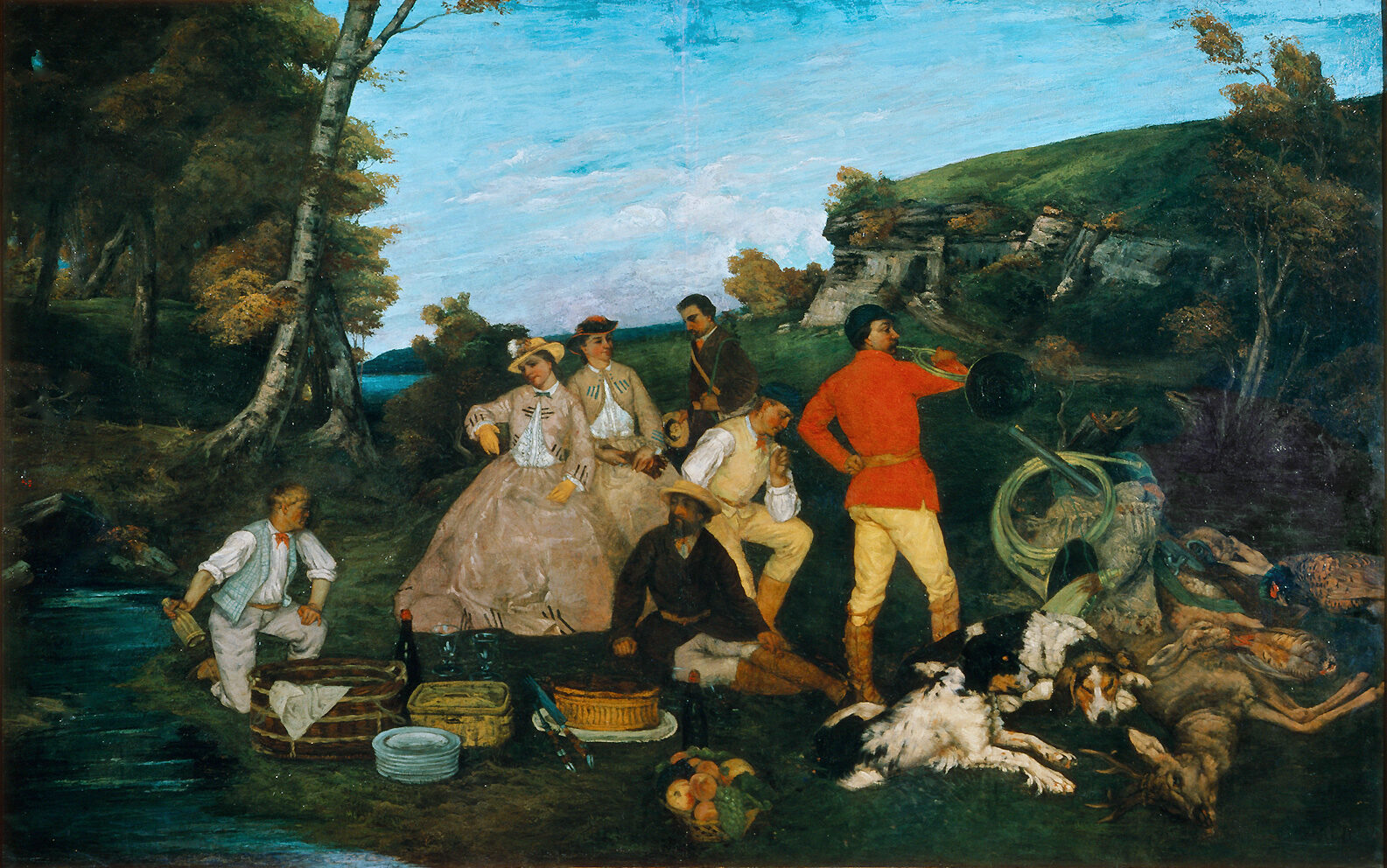As a passionate hunter, Brillat-Savarin enjoyed traditional midday luncheon trysts or haltes de chasse. he describes the gathering in “Meditation XV” in Physiologie du Gout, or The Psychology of Taste.
According to French usage, the halte de chasse is not un pique-nique usage because it is an alfresco gathering. English translators observe this: Fayette Robinson prefers the literal “halte de chasse,” Anne Drayton uses “pause in the chase” or “shooting-luncheon,” and M.F.K. Fisher makes it a “hunting luncheon.”
Brillat-Savarin’s halte has two parts, one necessary and the other festive. When they arrive at the trysting place, hunters snack while waiting for guests (their wives, lovers, and friends. “Shade attracts him; the turf receives him, the murmur of the rivulet advises him to open the flask he has brought to revive himself with. Thus placed, he takes out the little well-baked loaves, uncovers the cold chicken some kind hand has placed in his haversack, and finds the piece of Gruyere or Roquefort, which is to represent a dessert.” In a footnote, Brillat–Savarin says that he prefers white wine because it “resists heat better than any other.”

Gustave Courbet. Halte de Chasse (1858)
The festive portion of the halte begins when the caléches arrive with the hunters’ ladies. As the crowd mingles, staff spreads a cloth on which everything is served at once in the French style. The food is a gourmet’s delight of pâtés de Perigord, the wonders of Strasbourg [charcuterie], the delicacies of d’Achard [patisseries from Chez Achard], and all that the best laboratories [kitchens] produce that is transportable.” Instead of the tepid wine in the in backpacks, there is cold “foaming champagne, and as “corks fly, all laugh, jest, and are happy.”
Brillat-Savarin contends the joy of such an alfresco gathering is incontestable. It is an émanation du ciel (emanation of heaven) that gives the meal une vivacité inconnue dans les enclos (closed rooms), however well decorated.
Satisfied with the meal and the social bantering, the men return to the hunt, and according to Brillat-Savarin, with a twinkle in his eye, the ladies put on their hats.
Among hunters, a tryst is a designated meeting place. The halte de chasse or repas de chasse is a popular theme among painters but seldom written and about in fiction or poetry. Also a passionate hunter, Gustave Courbet painted several hunt scenes, of which Le Repas de Chasse (1858) is the closest in style to Brillat-Savarin’s.
Featured Image: A lithograph by Alphonse Farcy for Physiology of Taste by Brillat-Savarin (1867). http://gallica.bnf.fr/ark:/12148/btv1b9012870m/f1.item
See Jean-Anthelme Brillat-Savarin’s The Physiology of Taste or Meditations on Transcendental Gastronomy. Paris: Chez A. Sautelet et Cie, 1826; The Physiology of Taste, or Meditations on Transcendental Gastronomy. Edited and Translated by Fayette Robinson. Philadelphia: Lindsay and Blakiston, 1854; The Physiology of Taste, or Meditations on Transcendental Gastronomy. Edited and Translated by M.F.K. Fisher. New York: Harcourt Brace Jovanovich, 1978; The Physiology of Taste, or Meditations on Transcendental Gastronomy (1825). Edited and Translated by Anne Drayton. New York: Penguin, 1978

